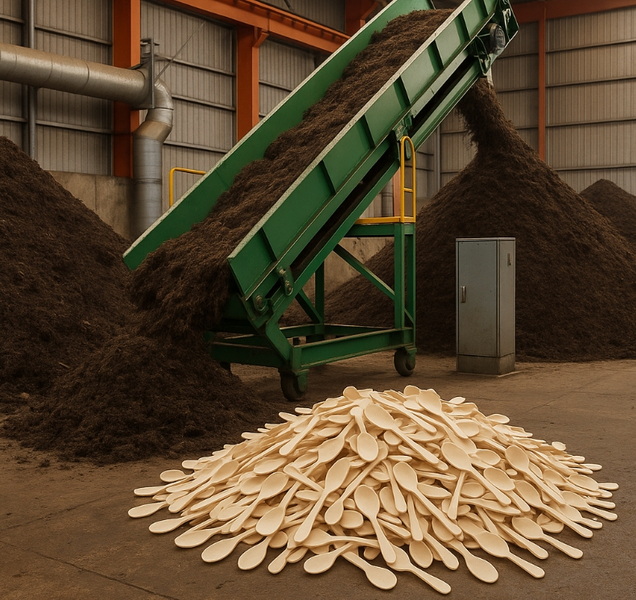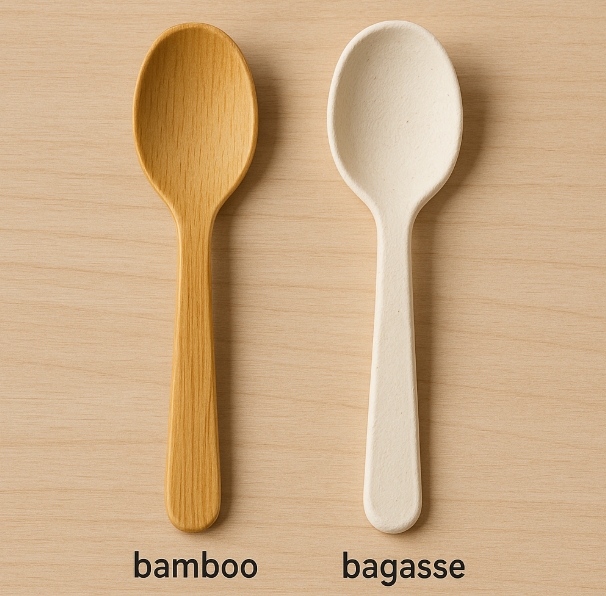
Content Menu
● The Rise of Chinese Spoon Disposable Culture
>> Convenience Meets Tradition
>> Environmental Consequences of Mass Adoption
● Materials Used in Chinese Disposable Spoons
>> Traditional Plastics
>> Emergence of Biodegradable Alternatives
● Assessing Eco-Friendliness: Life Cycle Analysis
>> Resource Extraction and Manufacturing
>> Usage and Performance
>> Disposal and Decomposition
● The Challenge of Waste Management
>> Recycling Limitations
>> Composting Infrastructure
>> Consumer Behavior and Education
● Policy and Industry Initiatives
>> Government Regulations
>> Corporate Responsibility
● The Future of Chinese Spoon Disposable Sustainability
>> Innovation in Materials
>> Circular Economy Approaches
>> Consumer Empowerment
● Conclusion
● FAQ
>> 1. What materials are most commonly used in eco-friendly Chinese disposable spoons?
>> 2. Are bamboo Chinese disposable spoons truly biodegradable and compostable?
>> 3. Can compostable Chinese disposable spoons be recycled with regular plastics?
>> 4. What are the main challenges in making Chinese disposable spoons sustainable?
>> 5. How can consumers and businesses help promote the use of sustainable Chinese disposable spoons?
The global surge in convenience dining and food delivery has led to an unprecedented demand for disposable cutlery, with the Chinese spoon disposable being a staple in countless restaurants, takeout services, and events. While these utensils offer undeniable practicality, their environmental impact has become a pressing concern. This article explores whether Chinese disposable spoons are genuinely eco-friendly and sustainable, delving into the materials used, their life cycle, the challenges of waste management, and the evolving landscape of green alternatives.

The Rise of Chinese Spoon Disposable Culture
Convenience Meets Tradition
Chinese disposable spoons are deeply rooted in both cultural tradition and modern convenience. Their distinctive deep bowl and sturdy handle make them ideal for soups, rice dishes, and a variety of Asian cuisines. The rise of food delivery platforms and fast-paced urban lifestyles has only amplified their usage, making them a ubiquitous part of dining experiences both in China and globally.
Environmental Consequences of Mass Adoption
However, the widespread use of disposable spoons, particularly those made from plastic, has contributed significantly to resource depletion and environmental pollution. The production and disposal of these utensils pose serious challenges, from the consumption of non-renewable resources to the generation of non-biodegradable waste that can persist in the environment for centuries.
Materials Used in Chinese Disposable Spoons
Traditional Plastics
Historically, most Chinese disposable spoons have been manufactured from petroleum-based plastics. These materials are cheap, lightweight, and durable, making them a preferred choice for mass production. However, their environmental footprint is substantial. The extraction, processing, and transportation of fossil fuels for plastic production release large quantities of greenhouse gases, contributing to climate change. Once discarded, these spoons do not biodegrade but instead fragment into microplastics, contaminating ecosystems and posing risks to wildlife and human health.
Emergence of Biodegradable Alternatives
In response to environmental concerns, manufacturers have begun exploring and adopting alternative materials for Chinese disposable spoons. These include:
- PLA (Polylactic Acid): Derived from renewable resources such as corn starch or sugarcane, PLA spoons are compostable in industrial facilities. They offer similar functionality to traditional plastics but break down more readily under the right conditions.
- Bagasse: Made from the fibrous residue of sugarcane after juice extraction, bagasse spoons are sturdy, heat-resistant, and compostable, providing a plastic-free alternative.
- Bamboo: Fast-growing and renewable, bamboo is used to craft spoons that are 100% natural, biodegradable, and compostable. Bamboo spoons decompose quickly and do not release harmful chemicals into the environment.
- Paper and Starch-Based Spoons: These are lightweight, compostable, and often coated with biodegradable substances to enhance durability.
The shift towards these materials reflects a growing recognition of the need for sustainable solutions in disposable tableware.
Assessing Eco-Friendliness: Life Cycle Analysis
Resource Extraction and Manufacturing
The environmental impact of a Chinese spoon disposable begins with the extraction of raw materials. Traditional plastic spoons rely on fossil fuels, leading to habitat destruction, water pollution, and carbon emissions. In contrast, bamboo, bagasse, and PLA are derived from renewable sources, often requiring less energy and generating fewer emissions during production.
Usage and Performance
Eco-friendly Chinese disposable spoons are designed to match or exceed the performance of their plastic counterparts. Bamboo and bagasse spoons, for instance, are strong, heat-resistant, and suitable for both hot and cold foods. PLA spoons maintain their integrity in a variety of dining scenarios, ensuring that sustainability does not come at the expense of functionality.
Disposal and Decomposition
The end-of-life phase is critical in determining the sustainability of disposable spoons. Plastic spoons typically end up in landfills or incinerators, where they persist for hundreds of years or release toxic fumes. In contrast, biodegradable spoons made from PLA, bagasse, or bamboo can break down in composting facilities, returning nutrients to the soil and minimizing long-term environmental impact.
However, the effectiveness of compostable materials depends on proper waste management infrastructure. Industrial composting facilities are necessary for PLA and bagasse to decompose efficiently, while bamboo spoons can often break down in backyard composts. Without access to appropriate disposal systems, even biodegradable spoons may end up in landfills, where decomposition is significantly slowed.
The Challenge of Waste Management
Recycling Limitations
The compact size and mixed materials of disposable cutlery make recycling difficult. Most municipal recycling programs do not accept plastic utensils, leading to high rates of landfill disposal. Even biodegradable spoons face challenges if not separated and processed correctly.
Composting Infrastructure
For compostable Chinese disposable spoons to fulfill their eco-friendly promise, robust composting infrastructure is essential. Industrial composting facilities are required for PLA and bagasse to break down efficiently. In regions lacking such facilities, these spoons may not decompose as intended, undermining their sustainability benefits.
Consumer Behavior and Education
Encouraging responsible disposal is crucial. Many consumers are unaware of the differences between biodegradable, compostable, and recyclable materials. Clear labeling, public education campaigns, and incentives for opting out of single-use cutlery can help shift behaviors towards more sustainable practices.

Policy and Industry Initiatives
Government Regulations
Recognizing the environmental impact of single-use cutlery, Chinese authorities have implemented policies to reduce consumption and promote eco-friendly alternatives. National standards for biodegradable plastics and incentives for using safe materials are part of broader efforts to mitigate plastic pollution and encourage sustainable dining habits.
Corporate Responsibility
Restaurants, food delivery platforms, and manufacturers are increasingly embracing their role in sustainability. Some businesses now offer customers the option to decline disposable cutlery, while others invest in compostable or biodegradable alternatives. Collaborative efforts across the supply chain are essential to drive meaningful change.
The Future of Chinese Spoon Disposable Sustainability
Innovation in Materials
Ongoing research and development are expanding the range of sustainable materials available for disposable spoons. Advances in bioplastics, improved compostability, and the use of agricultural byproducts are paving the way for more eco-friendly options that do not compromise on performance or affordability.
Circular Economy Approaches
Moving beyond single-use, some companies are exploring reusable models, such as deposit-return systems for cutlery or durable, dishwasher-safe alternatives. These initiatives aim to minimize waste and create a closed-loop system where resources are continually reused rather than discarded.
Consumer Empowerment
Ultimately, the transition to eco-friendly and sustainable Chinese disposable spoons depends on informed consumer choices. By prioritizing products made from renewable, compostable materials and supporting businesses that invest in green practices, individuals can drive demand for more responsible solutions.
Conclusion
Chinese disposable spoons have evolved from convenient plastic utensils to a diverse array of eco-friendly alternatives. While traditional plastic spoons pose significant environmental risks, the emergence of biodegradable options made from bamboo, bagasse, PLA, and other renewable materials offers a path towards sustainability. However, the true eco-friendliness of these products hinges on proper waste management, consumer education, and systemic changes in production and disposal practices.
Sustainability is not a one-size-fits-all solution. It requires a holistic approach that considers the entire life cycle of a product, from raw material extraction to end-of-life disposal. As policies tighten, technology advances, and public awareness grows, Chinese disposable spoons can indeed become a symbol of both cultural heritage and environmental responsibility.

FAQ
1. What materials are most commonly used in eco-friendly Chinese disposable spoons?
Eco-friendly Chinese disposable spoons are typically made from renewable materials such as bamboo, bagasse (sugarcane fiber), PLA (plant-based bioplastic), and starch-based composites. These materials are chosen for their ability to break down naturally, reducing long-term environmental impact.
2. Are bamboo Chinese disposable spoons truly biodegradable and compostable?
Yes, bamboo Chinese disposable spoons are 100% natural, biodegradable, and compostable. They break down quickly in composting environments and do not release harmful chemicals, making them an excellent alternative to plastic spoons.
3. Can compostable Chinese disposable spoons be recycled with regular plastics?
No, compostable spoons made from materials like PLA or bagasse should not be mixed with regular plastics in recycling streams. They require specific composting conditions to break down effectively and may contaminate traditional recycling processes if not separated.
4. What are the main challenges in making Chinese disposable spoons sustainable?
The key challenges include the lack of widespread industrial composting facilities, difficulties in recycling small and mixed-material utensils, and the need for greater consumer awareness about proper disposal methods. Addressing these issues is crucial for maximizing the sustainability benefits of eco-friendly spoons.
5. How can consumers and businesses help promote the use of sustainable Chinese disposable spoons?
Consumers can opt for biodegradable or compostable spoons, decline single-use cutlery when possible, and dispose of used utensils responsibly. Businesses can source certified eco-friendly products, educate customers about sustainable options, and participate in initiatives that support waste reduction and responsible sourcing.

















